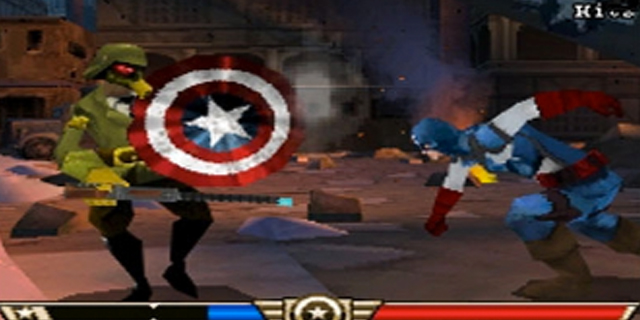The basic formula and gameplay of Pokemon have remained intact ever since Blue and Red first graced our shores. You play as a boy, or girl, from a small town who is given a Pokemon to raise and train on your way to becoming the champion of the Pokemon League in your region. In your way are 8 Pokemon gyms, the Elite Four, a rival trainer, and a gang of mostly inept ruffians. For the most part, Pokemon White doesn’t mess with the formula; after all, why change something that has sold more than 200 million copies in 15 years? It does, however, tweak the formula just enough to make it a new and refreshing take on the series.
Instead of having a childhood rival, you have two of them, and they’ll play integral parts in the journey you take part in. The story focuses on the more mature theme of freedom and slavery, with the gang, Team Plasma, a fierce animal rights group, taking a more active, and dangerous, role in the story.
As for the gameplay changes, the biggest additions are triple battles and rotation battles, which require more strategy than you’d think. In triple battles, each Pokemon can only attack the foes directly facing them. They can’t attack across the field of combat, so placement and what moves are used are a big factor in your success in these battles. In rotation battles, any of three creatures could attack you in a given turn, so simple type-matching won’t always work. (Black has more rotation battles than White, while White has more triple battles.) The gyms have been reworked as well, with many of them being more puzzle oriented than in the past, and with a beginning gym that is set up to always have a type advantage over your starting Pokemon. Finally, a change that was a long time coming is the ability to reuse TMs as many times as you want.
In each iteration of the Pokemon series, new creatures have been added, to the point where there are now 649 different ones to collect, train, and evolve. However, unlike past games, you only have access to the newly-introduced Pokemon for the main story. This is, I think, one of the best features of Pokemon White, as it makes the game feel entirely new when you can’t rely on your old favorites to get you through the game. You won’t see many of the more familiar monsters until after you’ve become the Pokemon League Champion.
Finally, the difference between each version is also more pronounced this time. In addition to each version having a set of creatures that are exclusive to it, each game also has a post-game area that is specific to that version as well. In White, you’ll have access to the White Forest, an area with over 30 exclusive monsters to catch.
Graphically, Pokemon White is crisper and places more emphasis on 3D environments than past games have. Additionally, the battles are more cinematic, with the Pokemon moving around during battle instead of standing like statues.
The audio also experienced a number of improvements. The soundtrack is higher quality and the annoying beeping that accompanies dangerously low health for your pokemon has been replaced with a much appreciated, fast-paced remix of the battle song.
The online capabilities have also been revamped, with connectivity being improved and new features being added. The GTS is back, improved with the ability to battle random people with it, and a new device, the C-Gear adding online and infrared connectivity to your game even when not visiting a Pokemon Center.
This is the perfect title to get back into the Pokemon series with if you’ve taken a break, or even if you’ve never played it before. As for longtime fans, while the core game is the same that you’ve enjoyed many times before, the story, the Pokemon, and all the trappings that go along with trying to catch them all, beg to be rediscovered once more.
Pros: Lots of great new creatures that you are ‘forced’ to use, crisp graphics, more mature themes
Cons: HMs still exist




















